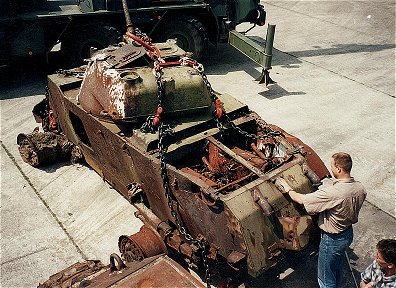

|
STAGHOUND Restored by Marco Hogenkamp PART I |
|
|
|
|
| . |
|
. |
|
|
|
|


|

|

Hull 1 |

Turrent |
|

Engine |

Hull 2 |
|

Hull 3 |

Hull Restored |
During the restoration work, new parts had to be found and collected. Previous restorations brought me into contact with a lot of parts suppliers, which now paid off because I knew the where-abouts of many Staghound parts even before I found a restorable example of this car. So it took just a few telephone calls to check if the parts were still there. To my luck, everything was still there so arrangements could be made to collect the parts. |

New Parts: Engine |

New Parts: Front Axle |

New Parts: Rear Axle |

New Parts: Steering |
|

Turrent Basket |

Engine Compartment |
|

Stag On Wheels Beside the Sherman Tank |

Interior |

|
|
|
|
| . |
|
. |
Marco Hogenkamp
Lievelderweg 36 ~ 7131 MC ~ Lichtenvoorde
The Netherlands

BACK TO THE DRAGOONS
CONTENTS PAGE
www.12MBDragoons.com
E-mail The Webmaster
E-mail Museum Staff
XII MB Dragoons Site Design:
Bill Hillman
Hillman Eclectic Studio
Copyright © /2004/2015